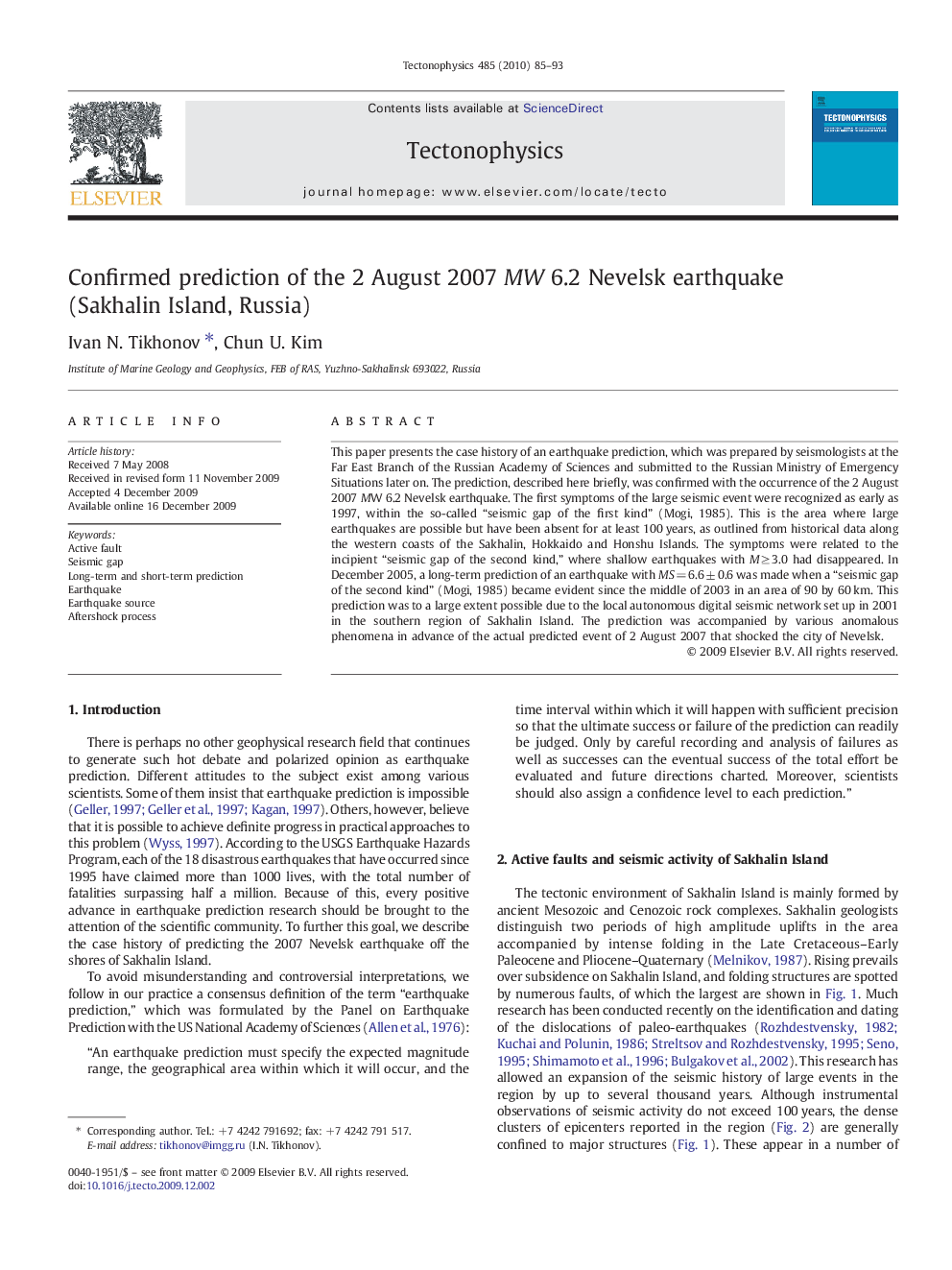| Article ID | Journal | Published Year | Pages | File Type |
|---|---|---|---|---|
| 4693639 | Tectonophysics | 2010 | 9 Pages |
Abstract
This paper presents the case history of an earthquake prediction, which was prepared by seismologists at the Far East Branch of the Russian Academy of Sciences and submitted to the Russian Ministry of Emergency Situations later on. The prediction, described here briefly, was confirmed with the occurrence of the 2 August 2007 MW 6.2 Nevelsk earthquake. The first symptoms of the large seismic event were recognized as early as 1997, within the so-called “seismic gap of the first kind” (Mogi, 1985). This is the area where large earthquakes are possible but have been absent for at least 100 years, as outlined from historical data along the western coasts of the Sakhalin, Hokkaido and Honshu Islands. The symptoms were related to the incipient “seismic gap of the second kind,” where shallow earthquakes with Рâ¥Â 3.0 had disappeared. In December 2005, a long-term prediction of an earthquake with ÐS = 6.6 ± 0.6 was made when a “seismic gap of the second kind” (Mogi, 1985) became evident since the middle of 2003 in an area of 90 by 60 km. This prediction was to a large extent possible due to the local autonomous digital seismic network set up in 2001 in the southern region of Sakhalin Island. The prediction was accompanied by various anomalous phenomena in advance of the actual predicted event of 2 August 2007 that shocked the city of Nevelsk.
Related Topics
Physical Sciences and Engineering
Earth and Planetary Sciences
Earth-Surface Processes
Authors
Ivan N. Tikhonov, Chun U. Kim,
